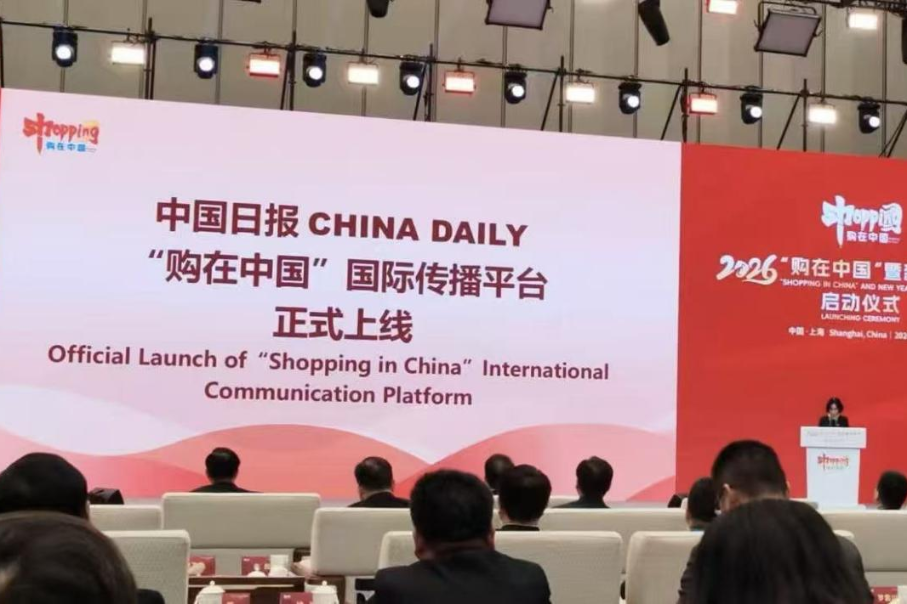US, China play contrasting roles in Latin America


The attack on the Brazilian Supreme Court, Congress and presidential palace by former Brazilian president Jair Bolsonaro's supporters on Sunday after his election defeat drew immediate parallels with the Jan 6, 2021 attack on the US Capitol by former US president Donald Trump's followers.
True, Latin America needs to bridge the socioeconomic divide by accelerating development, but some US politicians insist on exporting the so-called US-style democracy to Latin America — and other parts of the world — and thus exacerbating the chaos there.
China, however, has been playing a sharply contrasting role in Latin America.
The easing of anti-pandemic restrictions in China is good news for the global economy, especially because China is expected to see accelerated economic growth in 2023 which in turn will boost local trade, particularly commodity exports to China. This also means deepening economic cooperation between China and Latin America.
From the rise of protectionism in several Western countries, which culminated in Brexit and Donald Trump's election as US president, to the COVID-19 pandemic and the Russia-Ukraine conflict, the world has encountered many challenges in the past few years, which have disrupted the global supply chains.
But despite the global economic shocks, Sino-Latin American economic ties have remained strong. In 2021, for instance, trade between the two sides reached $451.4 billion, compared with $317.6 billion in 2019. And from January to November 2022, Sino-Latin American trade increased 9.2 percent year-on-year to $448.3 billion. And the unleashing of China's dormant demand in 2023 will be a shot in the arm for Sino-Latin American trade.
China's top trading partners in Latin America have been Brazil, Mexico, Chile, Peru, Colombia and Argentina for the past five years. In 2022, China's exports to the region consisted mainly of manufactured goods, such as machinery and equipment, vehicles and vehicle parts, and organic chemicals. China's imports from Latin America differ from country to country, but are mainly primary commodities such as iron ore, copper, petroleum, soybean, fruits and meat, although Mexican exports to China also include electronic integrated circuits, medical instruments and appliances, and vehicle parts.
As for Chinese investments in Latin America, they are expected to grow in line with the increase in China's outward foreign direct investment in the region ($436 billion in 2019,$629.8 billion in 2020, and $693.7 billion in 2021) despite the lingering pandemic.
According to Enrique Dussel Peters, a keen observer of Chinese investments in the region, 76.9 percent of China's FDI in Latin America went to Brazil during 2000-04, but from 2015 to 2021, the figure fell to 35.1 percent. China's other trading partners in Latin America, such as Chile, Mexico and Peru, received an increasingly large share of Chinese FDI.China's investments, too, shifted from the raw materials sector to the manufacturing and services sectors.
Chinese investment in the region's infrastructure projects is likely to grow, and help lower the "deficit" in infrastructure investment. It will also help offset, to a certain extent, the ongoing global monetary tightening due to the economic effects of the pandemic and the Russia-Ukraine conflict, especially because Chinese companies are now more interested in investing in infrastructure — and renewable energy and transportation — projects overseas.
According to Dussel Peters, Chinese companies invested $32.2 billion in 57 infrastructure projects in 2020-21, creating 170,337 jobs — a significant increase from the 2005-19 period.
However, there are a few challenges China and Latin American countries need to address to deepen their economic ties. First, future economic cooperation needs to take the environmental impacts into account in their pursuit of economic growth. In fact, Colombian President Gustavo Petro is leading a campaign to move his country away from fossil fuels to combat climate change, and China is committed to peaking its carbon emissions before 2030 and achieving carbon neutrality before 2060. Such environmental awareness should and will form the basis of bilateral economic cooperation in the coming years.
Second, Chinese companies need to guard against the risk of political instability in Latin American countries, because some of them are experiencing high inflation and rising borrowing costs, while people's living standards have fallen. Economic downturns in the region could also lead to social unrest and a political crisis.
In Peru, for example, the impeachment of former president Pedro Castillo in December 2022 triggered a wave of protests, in which at least 26 people were killed, interrupting economic activities. It is therefore important for Chinese companies to assess the social and political risks before making investment decisions.
And third, China and Latin American countries need to fix their development priorities and coordinate their policies so that their partnerships can better serve both sides' long-term interests. Brazil, for instance, has been worried that its trade with China could lead to de-industrialization because it primarily imports finished goods from China. Such worries can be addressed through cooperation. For instance, Chinese company BYD has invested in Brazil to manufacture electric bus chassis and solar photovoltaic panels, and is thus contributing to the development of the country's industrial sector.
As such, there are many ways in which China and Latin American countries can achieve win-win cooperation and better coordinate their development policies.
The author is a writer with China Daily.
The views don't necessarily reflect those of China Daily.


































